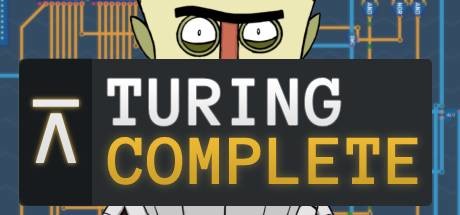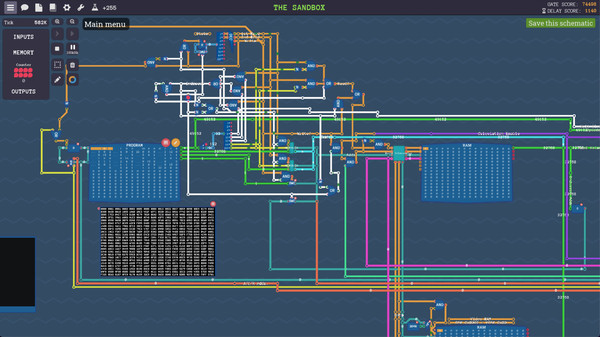Turing Complete
by LevelHead





The Developer Says...
Learn CPU architecture with puzzles
Keywords
Players Like...
❤ Methodical Progression from Logic Gates to CPU
The game takes players on a carefully designed journey, starting with simple logic gate puzzles and gradually introducing more complex concepts. Players first build up an understanding of fundamental components like NAND gates, then progress to designing arithmetic units, memory systems, and eventually a full CPU architecture. Many reviewers praise how the game methodically guides players, building their understanding step-by-step. However, some note that the difficulty can spike suddenly, with certain levels representing a major leap in complexity that may overwhelm beginners without prior computer science knowledge.
❤ Satisfying Circuit Design and Optimization
At the core of the gameplay, players must wire up various logic gates, registers, arithmetic units, and other components to design circuits that solve each puzzle. Reviewers highlight the satisfying feeling of success when their custom-built circuits work as intended. The ability to optimize solutions by minimizing the number of components used is also praised as an engaging aspect. Some players wish the game provided more feedback on the quality and optimization of their solutions, rather than just focusing on whether the end result functions correctly.
❤ Open-Ended Sandbox and Customization
In addition to the campaign puzzles, the game includes a powerful sandbox mode that gives players complete freedom to design their own digital systems. Reviewers enjoy the creativity allowed by this open-ended mode, where they can experiment with building unique CPU architectures and programming custom assembly languages. The ability to export designs as VHDL files is also highlighted as a useful feature for players who want to take their creations beyond the confines of the software.
❤ Effective Computer Architecture Education
A consistent theme in the reviews is the game's effectiveness as an educational tool. Many players, even those with prior computer science experience, report gaining deeper insights and a better intuitive grasp of how computers fundamentally work. The hands-on, puzzle-solving approach is praised as an engaging way to cement these concepts, compared to more passive learning methods. Reviewers appreciate how the game leads them through building up the core components of a computer from the ground up. Some note that the game may be too challenging for complete beginners without supplementary resources, but overall it is seen as an excellent way to develop a practical understanding of computer hardware.
You Might Also Looove...
About | Terms of Service | Privacy Policy
Copyright ©2024 by Totally Human Media
